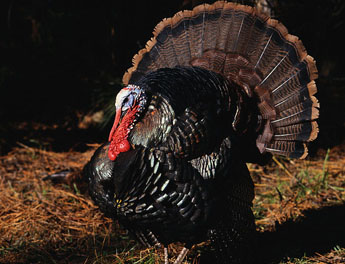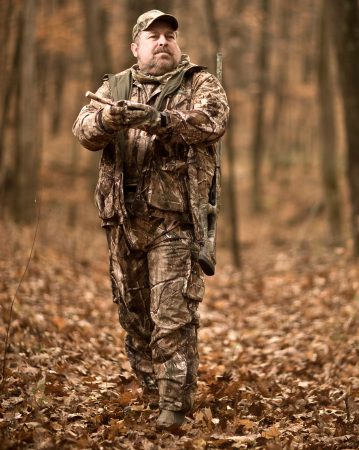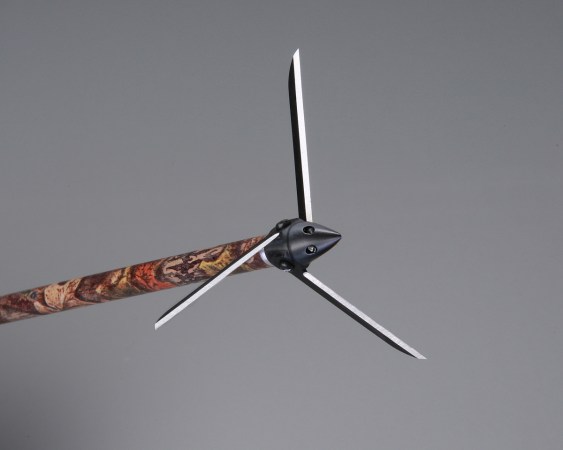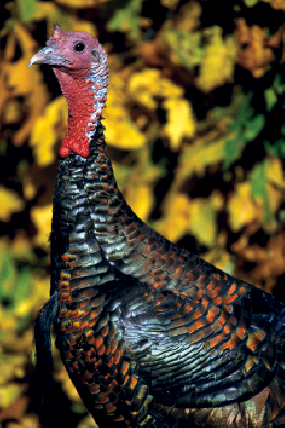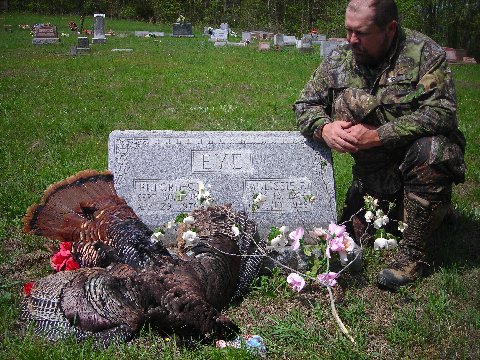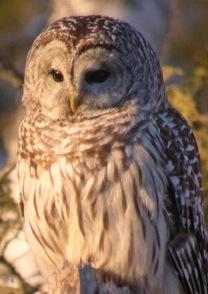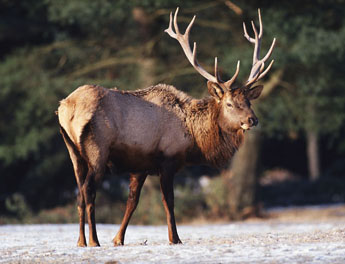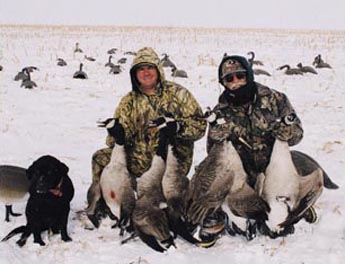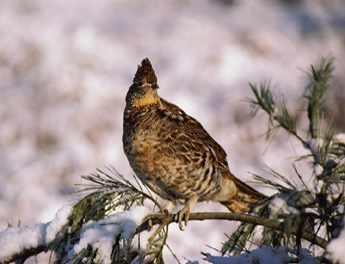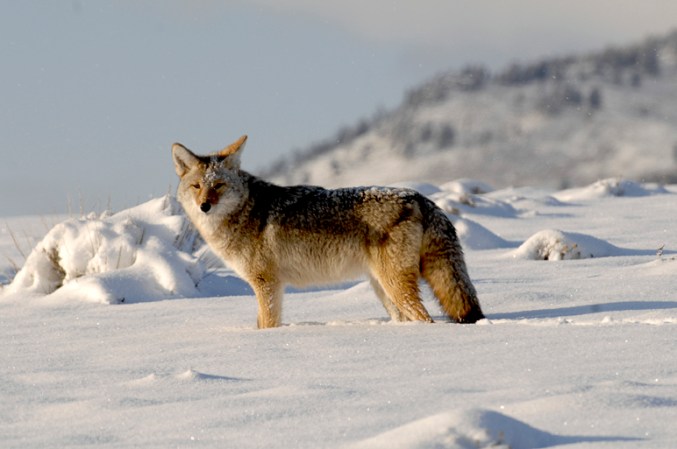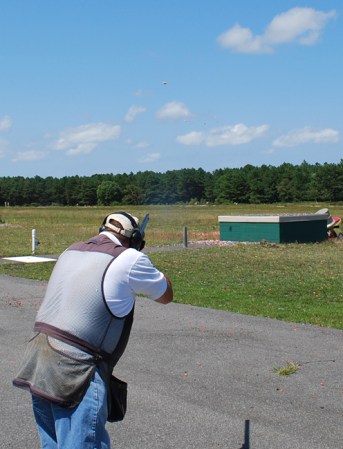When hunting the gobbling and strutting playboys of April, you can get away with fancy stuff like “cutting and running,” but when you head out in autumn with high hopes of bagging a wild Butterball for Thanksgiving, you’d better slow down and tone down. Six months removed from the breeding season, tom turkeys have morphed back into aloof, reticent bachelors. To fool them in the fall you need a different plan. Try the ones we’ve outlined here, which come from two wily veterans.
1. Find the Flocks
Just as in spring, wild turkeys chatter the most at sunrise. If you miss the first hour, you’ve missed the best hunting, explains Jim Clay, who has chased flocks up and down the big mountains and hollows of Virginia and West Virginia for four decades.
Get out there early and head for a roost. A copse of stout, tall hardwoods on a ridge near a cornfield or pasture is a good place to look. Remember that turkeys like to roost just off points or bluffs, or halfway down mountainsides. On a windy morning, look for birds in trees on the leeward sides of hills. If it’s raining, snowing or bitterly cold, a flock might seek shelter in conifers such as pines and hemlocks, and the birds might opt to sit in the trees for an hour or longer after daybreak.
As pink paints the sky, you might hear the yelping and kee-keeing of 10 to 20 hens, jennies and jakes. But if your goal is a longbeard, go elsewhere. Six to 10 crotchety old toms typically gang up over the summer and stay together all fall and winter.
Slip out to another ridge or logging road and listen for a “croaking yelp,” perhaps mixed with a couple of coarse clucks. “You can hear those gobbler calls for a hundred yards or so on a calm morning,” points out Clay, “but you have to listen real close.”
Sometimes toms will help you by gobbling a few times. A couple of gobblers might get into a sparring match and yell at each other with aggravated purring. But most mornings you won’t hear anything. At this point you’ll have to start hiking and looking. Walk quietly along a ridge, field edge or logging road and keep your ears open.
“One thing I’ve noticed is that every flock acts differently,” says Clay. “I’ve seen toms hit the ground and take off running for no reason and I’ve seen them pitch to a field half a mile away. But most turkeys pitch down, mill around and call for an hour or so as they begin to feed. You should cover ground and listen for those calls.”
As you hike, look for swaths of scratchings where a flock of gobblers searched for acorns, seeds, berries, insects and other foods. While hens often pick and stir daintily in the leaves, toms dig wide, deep V’s and fling back piles of leaves. “Look for those big wakes and follow them,” notes Clay. Scout also for large gobbler tracks and fat, hooked droppings in roadbeds and along field edges.
Keep hiking all day if you must. If you’re hunting good country with a healthy population of birds, the odds are in your favor. Biologists point out that in areas where acorns and other foods are abundant, the home range of a gobbler flock might be only a square mile or less. Sooner or later you ought to bump into some toms.
When you locate a flock, things get interesting. In Virginia and West Virginia, where Jim Clay hunts, scattering flocks is the longtime tactic of choice. He hikes high ground and tries to spot feeding birds in a hollow or bottom. Using terrain and cover, he sneaks close to the flock, lays down his shotgun and runs toward the birds, yelling or even barking like a dog. However, if you pop right over a ridge and there they are (believe me, this happens) take a shot if you have one. If not, you have to make them fly. You need to scatter them in as many directions as possible. No other instance in hunting allows you to be this carefree, so take advantage of it.
After the break you’ll have to make a judgment call. If just a few gobblers split off from the flock and run or fly the other way, you’ve got a shot. Move 100 yards or so in the direction in which the toms scattered, set up and wait. If five dropped off the ridge and three went up, stay between them. Don’t move too far and risk bumping the birds a second time; they won’t put up with much more. Take a seat and wait. In an hour or so you should hear some deep, throaty gobbler yelps. If you’re real lucky you may get to hear a dozen toms gobbling their heads off. Just repeat what the toms say and move again only if you absolutely have to. If they regroup elsewhere, break them up again and do it all over.
2. Call Your Bird
Ray Eye scatters little burlap blinds across his Missouri leases. He sets them 100 to 200 yards off known roosts and near crop fields, oak flats and pastures. He slips into a hide before daybreak and sits tight for a couple of hours. “When a flock flies down and starts making the rounds, you can often call in a couple of toms, or even a whole darn flock,” he says.
To do that, Eye yelps like a gobbler on either a box call or a diaphragm. “A gobbler’s yelps may be raspy or high-pitched, but they are always slower than a hen’s,” he notes. “A slow cadence–yawk…yawk…yawk–is how it’s done.”
Eye also uses an unusual call that he has dubbed a “high-pitched purt.” It’s sort of a loud, drawn-out gobbler cluck. He uses a slate call to mimic the unique sound. “Often a gobbler will answer with two or three ‘purts’,” he says. “Keep calling to him, and he might mix in loud, aggressive yelps. Now he’s hooked, and he ought to come.”
One of Eye’s favorite places to call during the midday hours is on a ridge near where the corners of two or three pastures or crop fields come together. “You can sit there and often see turkeys moving all day,” he notes. To lure a flock or break a tom away from his gang and into range, Eye purrs a lot on a slate call. “Turkeys purr all the time as they feed and move toward one another,” he says. “It’s a call they feel comfortable coming to.”
While Eye prefers to sit and call near a feeding area–“you’re not walking all over the woods and spooking birds”–he goes on the move around 3 in the afternoon on a slow day. He heads back to a roosting area and climbs back into one of his blinds.
“I do a little yelping and ‘purting,’ and if a tom comes in, great,” he says. “But mostly I listen to hear toms flying up at dusk–their wing beats sound heavy–so I’ll know where to start calling the next morning.”
Rather than scatter birds and call them in, Eye prefers calling to flocks of unsuspecting gobblers from an oak ridge or from near a cornfield. He says, “I’ve even had single birds and pairs split off a flock and come in strutting and gobbling in the fall.”
Michael Hanback collaborates with 19 of the nation’s best hunters and callers in his latest book, Advanced Turkey Hunting. To order an autographed copy, go to www.eders.com or call 877-656-0808.
Gear for Fall Gobblers
—Carry a 12-gauge pump or autoloading shotgun chambered for 3- or 3 1/2-inch shells. Screw in a full or super-full choke tube. Use a magnum load with a shot size of 4, 5 or 6.
—If you choose to use archery tackle, use your whitetail bow, but back the draw weight down to 60 pounds or so. This way you can pull and hold awhile for a gobbler to turn just right for the shot. (Try to take it just behind the wing as it quarters away.) Either aluminum or carbon arrows work fine. Try a mechanical broadhead with a 1 1/2- to 2-inch cutting diameter.
—Glass for flocks in fields, creek bottoms and hollows with a midsize 8X binocular.
—Any camouflage will do, but once the leaves fall it makes sense to wear a pattern with browns and grays. If gun season for deer is also open, wear a hunter orange cap or vest when hunting.
—Try a 2- to 4-reed diaphragm or a box for mimicking gobbler clucks and yelps. A hollow-sounding glass call also works great for yelps and clucks. Purring on a slate can be dynamite.

